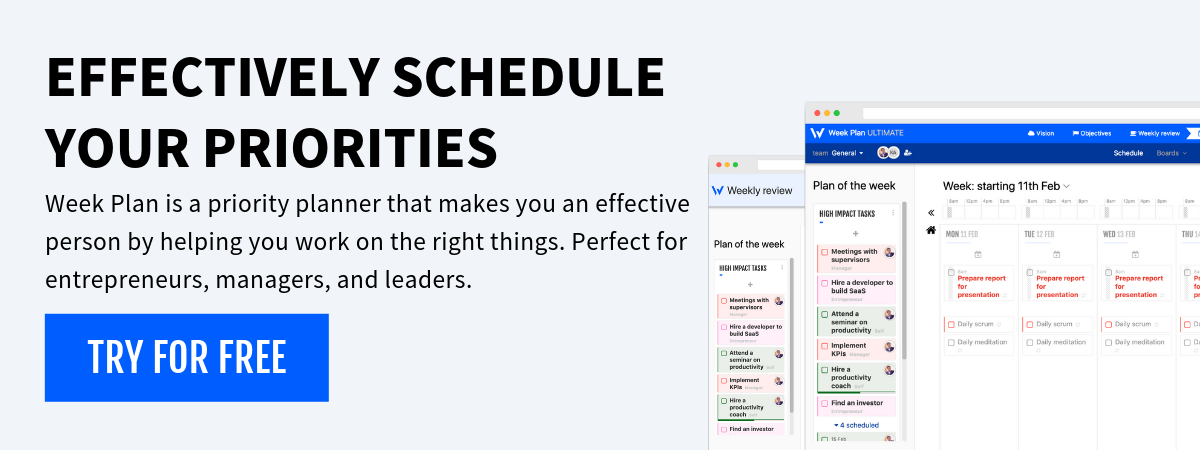The Eisenhower Matrix is a conceptual tool designed to help individuals prioritize tasks by categorizing them according to their urgency and importance. This method enables users to distinguish between tasks that require immediate attention and those that can be scheduled for later or delegated. Named after Dwight D. Eisenhower, the 34th President of the United States, who was known for his exceptional ability to sustain high productivity levels, the matrix serves as a foundational strategy in personal and professional time management.
Understanding the Eisenhower Matrix
The Eisenhower Matrix divides tasks into four quadrants based on two criteria: urgency and importance.
1- Quadrant 1
Important and Urgent - Tasks that are critical and require immediate attention. Examples include crisis management, deadline-driven projects, and emergency situations.
2- Quadrant 2
Important but Not Urgent - Tasks that are important for long-term success and personal growth but do not have immediate deadlines. Examples include strategic planning, personal development, and relationship building.
3- Quadrant 3
Urgent but Not Important - Tasks that demand immediate attention but do not contribute significantly to long-term goals. Examples include most emails, some phone calls, and certain meetings.
4- Quadrant 4
Neither Urgent nor Important - Activities that offer little to no value and can lead to wasted time. Examples include aimless internet browsing, excessive social media use, and other forms of entertainment that do not contribute to personal or professional growth.
Application and Benefits
The practical application of the Eisenhower Matrix involves regularly categorizing tasks into the four quadrants and allocating time accordingly. By focusing primarily on Quadrants 1 and 2, individuals can ensure that they are addressing critical tasks while also making time for activities that contribute to their long-term objectives.
The benefits of utilizing the Eisenhower Matrix include:
Improved Time Management
Helps individuals focus on tasks that are truly beneficial, reducing time spent on unproductive activities.
1- Stress Reduction:
By prioritizing urgent and important tasks, individuals can reduce the stress associated with last-minute deadlines and crises.
2- Enhanced Productivity
Encourages a proactive approach to tasks, leading to increased efficiency and effectiveness.
3- Clearer Decision-Making
Provides a straightforward framework for evaluating and prioritizing tasks, simplifying the decision-making process.
Implementing the Eisenhower Matrix
To effectively implement the Eisenhower Matrix, follow these steps:
1- List all tasks
Begin by listing everything that needs to be done, without regard for order or priority.
2- Categorize each task
Use the criteria of urgency and importance to place each task in the appropriate quadrant.
3- Plan and prioritize
Focus on completing Quadrant 1 tasks first, then schedule Quadrant 2 tasks. Evaluate whether Quadrant 3 tasks can be delegated and limit time spent on Quadrant 4 activities.
4- Regular review
Regularly review and adjust your priorities to ensure that you are focusing on the tasks that are most beneficial to your goals.
Conclusion
The Eisenhower Matrix is a powerful tool for managing tasks and improving productivity. By categorizing tasks based on their urgency and importance, individuals can make more informed decisions about where to focus their efforts. Implementing this method can lead to significant improvements in time management, stress reduction, and overall productivity.

More Posts
10 Common Time Management Mistakes People Make
Understanding how to manage time well is key for a successful day at work. But many professionals struggle with this. They often don’t make to-do lists or plan their week properly. This makes...
Goal Planning - The Complete Guide to Setting Goals
“Setting goals is the first step from turning invisible to visible.” — Tony Robbins. Goal-setting is an effective method for visualizing and inspiring yourself to achieve your ideal future. The process of defining...
10 Time Organization Techniques to Reduce Stress
Good time management is key for both stress management and productivity improvement. In a report by Slack, 43% of workers found staying motivated tough. And 29% struggled to focus. Plus, 71% of bosses feel the pressure...
The Best 45 Books to Deal with Procrastination
This article features the top-recommended books that will help you understand what procrastination is, why you procrastinate, and what you can do in order to stop. Then, you will see some other recommendations...